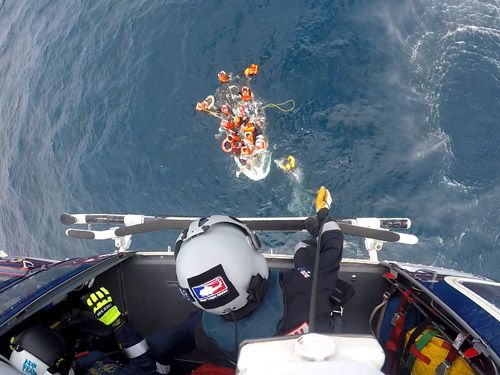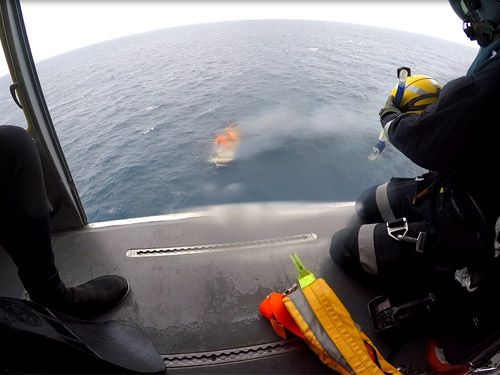Latest News
Safety Equipment Is Likely To Save Your Life
Thursday, 24 December 2020
If you’re at sea and disaster strikes, your safety equipment is likely to save your life.
Having the right equipment on board made all the difference one sunny June day off the coast of Brisbane. A charter vessel set out on an early morning trip with 14 people on board, ready for a day of perfect weather, fishing and fun.
Twenty nautical miles out to sea, disaster struck when a fire started, spreading quickly. The passengers had no choice but to abandon ship, climbing into the vessel’s six-metre dinghy with their lifejackets and safety equipment. Unfortunately, the dinghy capsized, leaving all 14 people sitting on top of the hull or floating in the water.
Good preparation meant every person on board had a lifejacket, including the children. The EPIRB was registered with AMSA, the details up to date, and there was also a phone on board to make the emergency call. Emergency services were quickly alerted to the situation.
The EPIRB and the phone call were critical to the search and rescue response. As the vessel was in mobile phone range, the Water Police were quickly alerted and given details of the emergency situation, including what had happened, the number of people in danger, and their approximate location. At the same time, search and rescue officers at the AMSA Response Centre looked up the EPIRB registration, passing along vital information such as the vessel registration, emergency contacts, and trip details. Best of all, the EPIRB had GPS, and the GPS position helped the Water Police pinpoint the exact location of the charter vessel. Without GPS the search area would have been over five kilometres in radius.
Armed with this information, and the ability to stay updated as the situation changed, emergency services immediately launched a rescue. The response included Gladstone Water Police and Volunteer Marine Rescue, a nearby cargo ship, an island ferry, two emergency helicopters and a marine pilot transfer helicopter. One of the three rescue helicopters was first on scene, winching up one elderly survivor for transfer to Gladstone Hospital. Not long after, the first police vessel arrived and recovered the remaining people, returning them safely to Gladstone. Their ordeal was over.
Despite the serious nature of the emergency, everyone was recovered with only minor injuries and mild hypothermia. If it weren’t for the lifejackets, EPIRB, and two-way communications, it could have been a very different outcome that morning.
Situations like these show the importance of preparation. Every step of the rescue operation was helped by the forethought and planning of the vessel owner and the skipper, and their dependable safety equipment.
Not all emergencies can be prevented. Making sure your equipment is ready for any situation, and knowing what to do in an emergency, makes all the difference if disaster strikes.
Before you go:
• Have you registered your EPIRB with AMSA?
• Are your EPIRB details, including emergency contacts, up to date?
• Does everyone on board know what to do in an emergency?
• Are there enough lifejackets on board for everyone?




